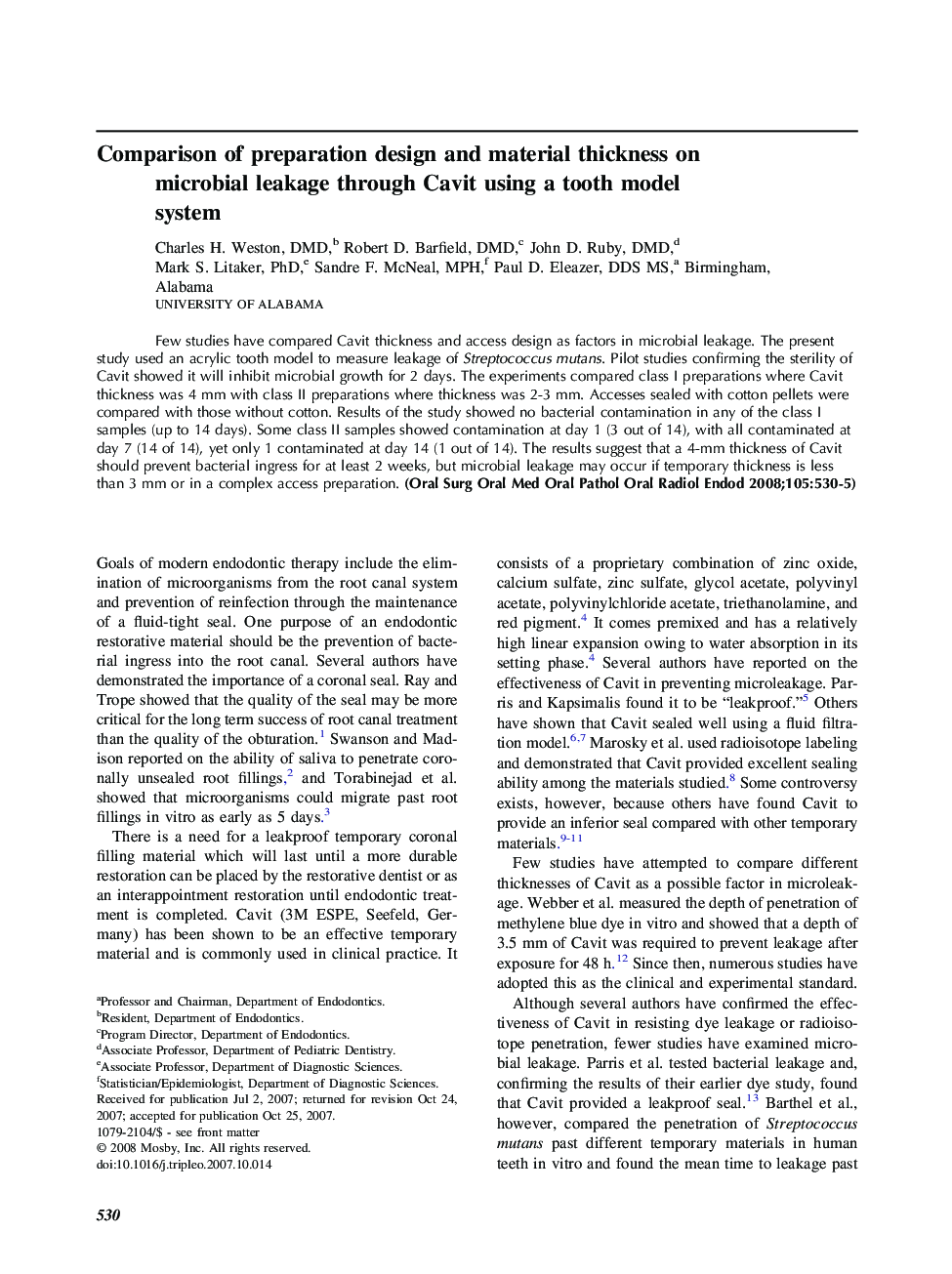| Article ID | Journal | Published Year | Pages | File Type |
|---|---|---|---|---|
| 3168867 | Oral Surgery, Oral Medicine, Oral Pathology, Oral Radiology, and Endodontology | 2008 | 6 Pages |
Few studies have compared Cavit thickness and access design as factors in microbial leakage. The present study used an acrylic tooth model to measure leakage of Streptococcus mutans. Pilot studies confirming the sterility of Cavit showed it will inhibit microbial growth for 2 days. The experiments compared class I preparations where Cavit thickness was 4 mm with class II preparations where thickness was 2-3 mm. Accesses sealed with cotton pellets were compared with those without cotton. Results of the study showed no bacterial contamination in any of the class I samples (up to 14 days). Some class II samples showed contamination at day 1 (3 out of 14), with all contaminated at day 7 (14 of 14), yet only 1 contaminated at day 14 (1 out of 14). The results suggest that a 4-mm thickness of Cavit should prevent bacterial ingress for at least 2 weeks, but microbial leakage may occur if temporary thickness is less than 3 mm or in a complex access preparation.
